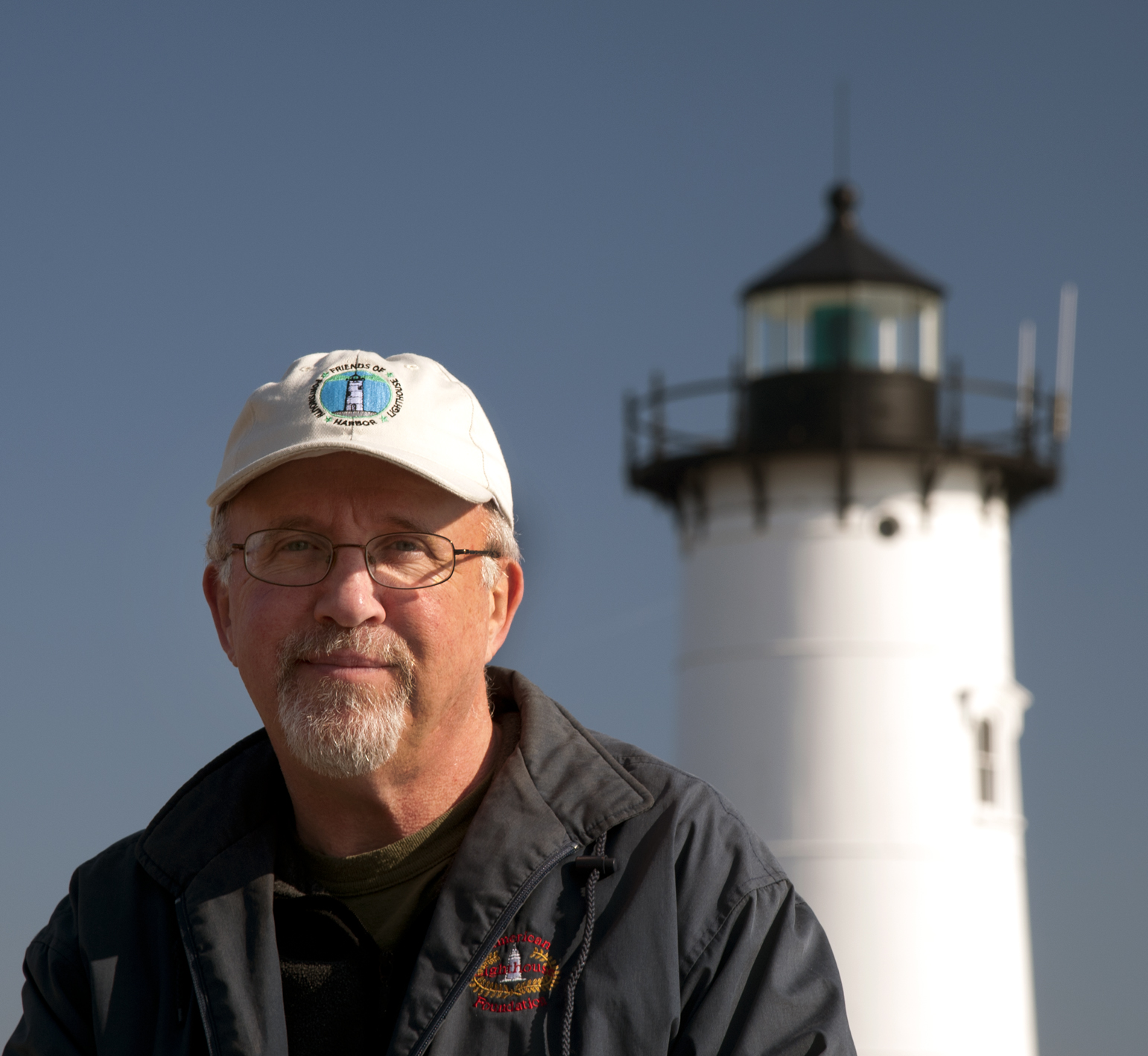
Captain Joshua Card here, at Portsmouth Harbor Light Station, New Hampshire. I want to tell you about a sad but fascinating story from down Connecticut way. It’s really a two-part story.
Greens Ledge is one of several treacherous formations near Norwalk Harbor in western Long Island Sound. A lighthouse was constructed in 1902 to help mariners through the west entrance to Norwalk, Connecticut, which was a growing commercial port. Greens Ledge is a cast-iron tower on a cylindrical cast-iron concrete-filled foundation, typical of offshore “sparkplug” lights built in the late 1800s and early 1900s.

John Kiarskon, a native of Sweden, arrived as assistant keeper in 1909 and was soon promoted to principal keeper. On March 2, 1910, Kiarskon left the lighthouse in the station’s only boat, telling Assistant Keeper Leroy C. Loughborough that he was going to Norwalk to pick up provisions and both men’s paychecks. He never returned. Eleven days later, the lighthouse tender Pansy landed at Green’s Ledge and found Loughborough “half-starved, exhausted and almost crazy,” according to an article in the Washington Post. Loughborough told authorities that during the time he was abandoned, he lived on potatoes and dog biscuits, with only boiled salt water to drink.
Through the whole nightmarish ordeal, Loughborough struggled to keep the light going along with the two engines for the fog signal. For three days, he neither ate nor slept. During one 72-hour stretch, there was continuous fog, and one of the engines failed. He struggled vainly to repair the engine, and meanwhile the light burned itself out. When the tender crew arrived to investigate the extinguished light, the assistant keeper was found, almost unconscious and with his dog at his side, on the floor by the engine. Loughborough later said that he would have shared his last biscuit with the dog.

It turned out that Kiarskon had gone to a local hotel, where he cashed Loughborough’s paycheck for $44.69 and went on a drinking binge. He eventually gave himself up to Bridgeport police and was taken to South Norwalk. Kiarskon was immediately discharged as keeper and was expected to serve time in prison for forgery, but his ultimate fate is unclear.
“I feel ten years older and my hair has grown gray,” said Loughborough after being taken ashore. He continued:
I would not go through that experience again for the United States mint. Several times I inverted the flag on the mast, intending to attract the attention of some passing boat and thereby escaping to the mainland, but the greater part of the time, it was so stormy or foggy the signal could not be seen. Each time I would take it down, determined to stick it out to the end. I was almost out of my head from the strain. It would not have been so bad save for the awful fog, which made me keep at the engines night and day. It is well that the Pansy came when she did. I don’t think I would ever have moved from that rug.
Assistant Superintendent John S. Hayward was on the Pansy when Loughborough was found. On examining the lighthouse log, Hayward saw that Kiarskon had made no entries for 11 days, supporting Loughborough’s story. The assistant keeper received high praise for his heroism in the face of abandonment and possible starvation. Loughborough never recovered from the ordeal. A little less than a year later, in February 1911, he died of tuberculosis at the home of his father in Point Judith, Rhode Island. He was just 27 years old.

William T. Locke was the next keeper, and Leroy Loughborough’s brother, George, became his assistant. One day in March of 1912, George Loughborough went ashore to South Norwalk. It was reported that while there, he learned of an aunt’s illness and went to visit her in Wakefield, Rhode Island. After 16 days, Keeper Locke was found alone at the lighthouse, weak and exhausted. He told the authorities that he had gotten little sleep since the assistant left, and had reduced his daily rations to a minimum out of fear of starvation.
Locke was luckier than Leroy Loughborough, as he apparently recovered from the episode. It isn’t clear what happened to George Loughborough, but his lighthouse-keeping career was no doubt over. This story begs for more details, but few can be found.

Jeremy D’Entremont is the author of more than 20 books and hundreds of articles on lighthouses and maritime history. He is the president and historian for the American Lighthouse Foundation and founder of Friends of Portsmouth Harbor Lighthouses, and he has lectured and narrated cruises throughout the Northeast and in other regions. He is also the producer and host of the U.S. Lighthouse Society podcast, “Light Hearted.” He can be emailed at Jeremy@uslhs.org

